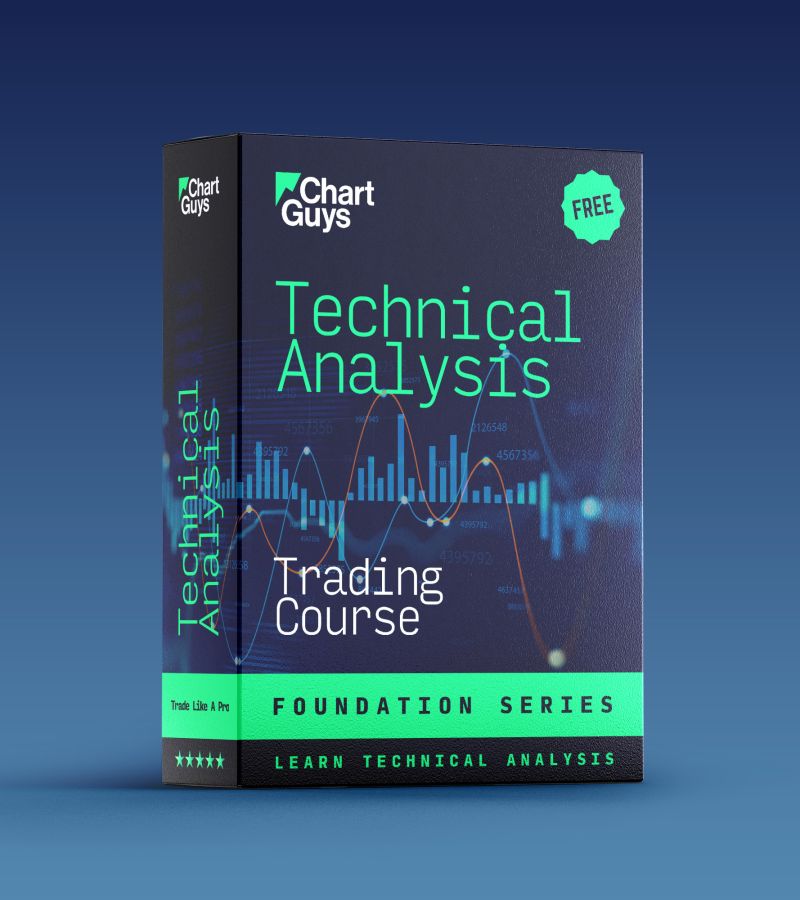Understanding Cargill's Business Structure
Cargill stands as one of the largest private companies in the world, operating as a family-owned corporation since its founding in 1865. The company has grown from a single grain storage facility to a global agricultural powerhouse that generates annual revenues exceeding $134 billion. Today, Cargill maintains operations in 70 countries and employs more than 155,000 people, making it a dominant force in global agriculture, food processing, and commodity trading.
Global Agricultural Operations
The company's business model spans multiple sectors of the agricultural supply chain. At its core, Cargill trades and processes agricultural commodities like grain, oilseeds, and cotton. They've built an impressive network of storage facilities, processing plants, and shipping operations that connect farmers to markets worldwide. Beyond basic commodities, Cargill has expanded into value-added products such as animal nutrition, food ingredients, and bioindustrial materials. This diversification helps protect the company from market volatility while creating multiple revenue streams.
Private Ownership Structure
What sets Cargill apart is its unique ownership structure. The descendants of founder W.W. Cargill and the MacMillan family maintain approximately 90% ownership of the company through a complex system of trusts and family holdings. This private ownership model allows Cargill to focus on long-term growth strategies without the pressure of quarterly earnings reports that public companies face. The company can reinvest profits into expansion, research, and development while maintaining strict control over its operations and strategic direction.
Market Influence and Scale
The scale of Cargill's influence on global agriculture cannot be overstated. The company handles approximately 25% of all U.S. grain exports and operates one of the world's largest transportation networks. Their market intelligence and trading activities affect commodity prices worldwide, while their research and development efforts drive innovation in food science and agricultural technology. Despite being private, Cargill's actions send ripples through public markets, affecting everything from grain futures to consumer food prices.
Sustainability and Innovation
Environmental sustainability and technology integration represent key focus areas for Cargill's current operations. The company has committed billions to developing sustainable farming practices, reducing carbon emissions, and improving supply chain efficiency through digital technologies. These initiatives reflect Cargill's adaptation to changing market demands and regulatory environments while maintaining its core strength in agricultural commodities. Their investments in blockchain technology for supply chain transparency and artificial intelligence for trading operations showcase their commitment to staying ahead of industry trends.
Direct Investment Possibilities
The question of investing in Cargill often comes up among those interested in agricultural markets and private equity. Given Cargill's massive influence in global agriculture and impressive revenue figures mentioned earlier, it's natural to want a piece of this successful enterprise. However, the reality of investing in Cargill is quite different from typical stock market investments.
- Traditional Stock Purchase: Not Available
Cargill does not offer public stock because it remains privately held. The company has actively chosen to maintain this status since its founding in 1865, allowing the founding families to retain control over business decisions and long-term strategy. This means you cannot buy shares through standard brokerages or stock exchanges. - Family Ownership Structure
Approximately 90% of Cargill belongs to around 125 family members, descended from founder W.W. Cargill and the MacMillan family. This tight ownership circle creates a closed system where shares typically transfer only between family members or back to the company itself. The remaining 10% is primarily held by current and former executives. - Employee Investment Options
Even Cargill employees have limited investment opportunities. While some executive-level positions may receive equity compensation, most employees cannot directly invest in the company. This contrasts sharply with public companies that often offer employee stock purchase programs. - Private Equity Limitations
Large private equity firms occasionally approach Cargill with investment proposals, but the company has historically rejected these advances. The founding families' commitment to independence has prevented even institutional investors from gaining significant ownership stakes. - Debt Investment Opportunities
While equity investment isn't possible, Cargill occasionally issues corporate bonds. These debt instruments represent one of the few ways outside investors can directly place capital with the company. However, these bonds typically target institutional investors and may be difficult for individual investors to access. - Joint Venture Participation
Cargill sometimes forms joint ventures with public companies. While this doesn't provide direct investment in Cargill, it offers exposure to projects where Cargill's expertise and resources play a significant role. These partnerships often focus on specific agricultural or technological initiatives.
This ownership structure has served Cargill well, enabling quick decision-making and long-term planning without pressure from public shareholders. The company's ability to focus on multi-generational growth rather than quarterly earnings has contributed to its sustained success in the agricultural sector. However, this same structure effectively closes the door on direct investment opportunities for most potential investors, leading many to seek alternative ways to participate in the agricultural market's growth.
For those interested in gaining exposure to Cargill's market segment, the next section will explore several alternative investment methods that align with similar business activities and market dynamics.
Alternative Investment Methods
While direct investment in Cargill remains off-limits to most investors, several options exist to gain exposure to similar market segments and business activities. Building on our understanding of Cargill's operational scope and market influence, let's examine practical alternatives that align with agricultural sector investment goals.
Exchange-Traded Funds (ETFs)
Agricultural ETFs offer broad exposure to the farming and food production sectors. The VanEck Agribusiness ETF (MOO) and the Invesco DB Agriculture Fund (DBA) track companies and commodities that mirror many of Cargill's business lines. These funds include holdings in farm equipment manufacturers, seed producers, and agricultural technology companies, providing diversified exposure to the entire agricultural value chain.
Competitor Stock Investments
Several publicly traded companies compete with Cargill in various market segments:
- Archer-Daniels-Midland (NYSE:ADM) - Global agricultural processing and commodities trading
- Bunge Limited (NYSE:BG) - Agribusiness and food production
- Tyson Foods (NYSE:TSN) - Food processing and protein products
These companies offer direct exposure to similar business models and market dynamics.
Agricultural Technology Companies
Modern farming relies heavily on technology, and several public companies focus on agricultural innovation:
- Deere & Company (NYSE:DE) - Agricultural equipment and precision farming technology
- Corteva (NYSE:CTVA) - Seeds and crop protection solutions
- Lindsay Corporation (NYSE:LNN) - Irrigation systems and infrastructure
These investments capitalize on the technological advancement of agriculture, a key focus area mentioned in Cargill's operations.
Commodity-Based Investments
Physical commodity investments through futures contracts or commodity-focused ETFs provide exposure to the raw materials Cargill trades:
These products track specific agricultural commodities, though they require understanding of futures markets and associated risks.
Supply Chain Partners
Companies that work closely with Cargill in various capacities offer another investment avenue:
- Rail transportation companies handling grain shipments
- Food manufacturers using Cargill ingredients
- Agricultural chemical and fertilizer producers
This approach leverages Cargill's extensive supply chain network while maintaining investment flexibility.
Investment Considerations
Each alternative presents unique advantages and risk factors. Agricultural ETFs offer broad exposure but may include companies outside your investment focus. Individual stocks provide more targeted investment but carry company-specific risks. Commodity investments track underlying agricultural products directly but face higher volatility and complexity.
The key lies in selecting investments that match your risk tolerance and investment goals while providing exposure to the agricultural sectors you find most promising. Consider creating a balanced portfolio incorporating several of these alternatives rather than concentrating on a single approach.
Remember that agricultural markets face seasonal variations and can be affected by weather patterns, global trade policies, and changing consumer preferences. These factors influence all agricultural investments, requiring regular monitoring and portfolio adjustments as market conditions evolve.
Financial Performance and Market Impact
Cargill's financial performance tells a compelling story of private enterprise success. In fiscal year 2023, the company reported revenues of $177 billion, marking a significant increase from previous years. This growth reflects both rising commodity prices and expanding operational capacity across global markets.
Breaking down the numbers reveals several key performance indicators:
- Net earnings reached $6.7 billion in 2023
- Operating cash flow maintained steady growth at $9.2 billion
- Capital investments totaled $4.3 billion
- Debt-to-equity ratio remained stable at 0.38
These metrics position Cargill among the most financially robust agricultural companies worldwide, despite its private status. When compared to public competitors like Archer-Daniels-Midland (ADM) and Bunge Limited, Cargill's revenue exceeds both combined, highlighting its market dominance.
Market Impact Analysis
Cargill's operations create ripple effects throughout agricultural markets. The company's trading decisions influence global commodity prices, affecting both public companies and market indices. Recent examples include:
- A 15% increase in grain market volatility following major Cargill procurement decisions
- Price movements of 3-5% in soybean futures correlating with Cargill's trading patterns
- Agricultural stock index fluctuations of up to 2% following Cargill's quarterly performance announcements
Public companies in the agricultural sector often reference Cargill's market positions in their earnings calls, demonstrating the company's influence as a price-setter and trend-maker. This impact extends beyond direct competitors to include:
- Transportation companies handling agricultural shipments
- Food processors using agricultural inputs
- Technology providers serving the agricultural sector
Financial Stability and Growth Trends
Analysis of Cargill's financial stability shows consistent growth patterns even during market downturns. The company's diversified revenue streams, mentioned in our business structure section, provide natural hedges against market volatility. Key stability indicators include:
- Sustained profit margins averaging 3.8% over five years
- Investment grade credit ratings from major agencies
- Consistent dividend payments to family shareholders
Looking ahead, several factors suggest continued strong performance:
- Expanding global food demand driving agricultural commodity growth
- Technological investments improving operational efficiency
- Strategic acquisitions in high-growth market segments
The company's private ownership structure, while limiting direct investment opportunities, enables long-term strategic planning without quarterly earnings pressure. This advantage allows Cargill to maintain stable financial performance while investing in future growth initiatives.
Comparative Market Analysis
When benchmarking against public competitors, Cargill's performance metrics stand out:
| Metric | Cargill | Industry Average |
|---|---|---|
| Revenue Growth | 12.4% | 8.7% |
| Operating Margin | 3.8% | 2.9% |
| Market Share | 25% | 8% |
These comparisons highlight Cargill's operational efficiency and market leadership, supporting its position as a benchmark for agricultural sector performance.
Future Investment Prospects
The agricultural sector stands at an inflection point, with technological advances and shifting global food demands reshaping investment opportunities. While Cargill remains privately held, understanding potential future scenarios helps investors position themselves strategically in related markets.
| Investment Scenario | Probability | Potential Impact |
|---|---|---|
| Cargill IPO | Low (5-10%) | High market disruption, new direct investment avenue |
| Continued Private Operations | High (80-90%) | Stable indirect investment opportunities |
| Partial Public Offering | Medium (10-15%) | Limited direct investment options |
The possibility of Cargill going public remains low, given the family's consistent stance on maintaining private control. Recent statements from company leadership reinforce their commitment to independence, suggesting investors should focus on alternative strategies for agricultural market exposure.
Several key trends will shape agricultural investment opportunities over the next decade:
1. Digital Agriculture Integration
- Precision farming technologies
- AI-driven crop management
- Blockchain supply chain tracking
These advances create investment opportunities in agricultural technology companies that partner with major players like Cargill.
2. Sustainable Agriculture Growth
Investment potential exists in:
- Carbon credit markets
- Sustainable farming practices
- Alternative protein development
Many public companies already operate in these spaces, offering immediate investment access.
3. Market Consolidation
The agricultural sector shows signs of increased consolidation:
- Strategic acquisitions
- Joint ventures
- Industry partnerships
This trend may create new investment opportunities through publicly traded companies expanding their market presence.
Data from previous sections highlights Cargill's strong financial performance, suggesting continued growth in agricultural markets. Investors can leverage this growth through:
- Strategic positions in competitor stocks
- Focused ETF investments
- Supply chain partner investments
Market analysis indicates agricultural sector growth of 5-7% annually over the next five years. This growth stems from:
- Rising global food demand
- Agricultural technology adoption
- Sustainability initiatives
For investors seeking exposure to Cargill-like operations, several pathways show promise:
- Technology Investment Track
- Agricultural software companies
- Smart farming equipment manufacturers
- Data analytics providers
- Infrastructure Play
- Grain storage facilities
- Transportation networks
- Port operations
- Value Chain Integration
- Food processing companies
- Agricultural input suppliers
- Distribution networks
The agricultural sector's evolution creates multiple entry points for investors. While direct Cargill investment remains unlikely, the sector offers abundant opportunities to participate in agricultural market growth through public market alternatives.
Understanding these future prospects helps investors develop balanced portfolios aligned with agricultural market trends while maintaining flexibility as the industry evolves. The key lies in identifying public companies positioned to benefit from the same market forces driving Cargill's success.
Investment Recommendations
Building on our analysis of Cargill and the agricultural sector, here's a practical guide for investors seeking exposure to this market. While direct investment in Cargill remains unavailable, several strategic approaches can help investors capture value in related agricultural markets.
Do's
- Diversify Across Agricultural Subsectors
- Spread investments between commodity producers, processors, and technology providers
- Example: Combine positions in ADM (processing) with Deere & Company (equipment) and Corteva (seeds)
- Focus on Supply Chain Integration
- Identify companies that control multiple steps in the agricultural value chain
- Target businesses with established relationships with major private players like Cargill
- Select ETFs with Clear Agricultural Focus
- Choose funds that track specific agricultural indexes
- Maintain exposure to both upstream and downstream agricultural operations
- Monitor Global Food Demand Trends
- Align investments with population growth patterns
- Focus on markets where Cargill has recently expanded operations
Don'ts
- Avoid Over-Concentration in Single Commodities
- Don't place large positions in individual commodity futures
- Remember that agricultural markets face seasonal volatility
- Skip Unproven Agricultural Technology
- Stay away from early-stage agtech without market validation
- Avoid companies without clear paths to profitability
- Neglect Risk Management
- Don't forget to maintain position size limits
- Avoid chasing short-term agricultural price movements
- Ignore Market Fundamentals
- Don't invest based solely on technical indicators
- Remember that weather patterns and global trade policies affect agricultural markets
Strategic Implementation
The most effective agricultural investment strategy combines multiple approaches based on individual risk tolerance and investment goals. For conservative investors, a portfolio might include:
- 40% Agricultural processing companies (ADM, Bunge)
- 30% Agricultural ETFs (MOO, DBA)
- 20% Equipment manufacturers (Deere)
- 10% Agricultural technology companies
More aggressive investors might consider:
- 35% Agricultural technology growth stocks
- 25% Commodity futures ETFs
- 25% International agricultural companies
- 15% Agricultural processors
Risk Management Guidelines
Consider these position limits:
- Maximum 5% portfolio allocation to any single agricultural stock
- Maximum 15% allocation to agricultural commodity ETFs
- Minimum 3-5 year investment horizon for sector exposure
- Regular quarterly rebalancing to maintain target allocations
These recommendations align with the market analysis presented in previous sections while acknowledging Cargill's continued influence on agricultural markets. Success requires patience, disciplined position sizing, and ongoing monitoring of global agricultural trends.
Remember that agricultural investments often show seasonal patterns and respond to global economic conditions. Your investment approach should reflect your personal financial situation and risk tolerance while maintaining sufficient diversification across the agricultural sector.
























